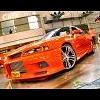R33 Gtr Series 3 V's Vspec
Announcements
-
Similar Content
-
Latest Posts
-
By Dose Pipe Sutututu · Posted
A great time for Alcons. https://www.coore.com.au/alcon-front-bolt-on-big-brake-kit-bmw-m3-e90 -
Murray has the right idea! Or just pretend you're a tow truck driver, they drive around as if it's a race track. Pads will be bedded in in no time! Or you'll arrive at an accident scene quickly...
-
You know what? I reckon you're on to something.
-
By Murray_Calavera · Posted
Sounds like doing a track day will resolve all your issues. -
The rotors only have about 5k on them so I didn't worry about the machining.
-







Recommended Posts
Create an account or sign in to comment
You need to be a member in order to leave a comment
Create an account
Sign up for a new account in our community. It's easy!
Register a new accountSign in
Already have an account? Sign in here.
Sign In Now